|
|
|
|
VirtualLab Fusion£ºDesign and Rigorous Analysis of Non-Paraxial Diffractive Beam Splitter |
| Time: 2022-12-17 21:06Source: infocrops.comWriter: infocrops |
Abstract
The direct design of non -paraxial diffractive beam splitters is still a challenge. Due to the quite large diffraction angle, the feature size of the element is in the same order of magnitude as the working wavelength. Hence, the design process is beyond paraxial modeling approaches. Thus, in this example, the Iterative Fourier Transform Algorithm (IFTA) and the Thin Element Approximation (TEA) are used for the initial design of the diffractive element structures, and the Fourier Modal Method (FMM) is applied afterwards for a rigorous performance evaluation, including the investigation of merit function changes in the case of height variations.
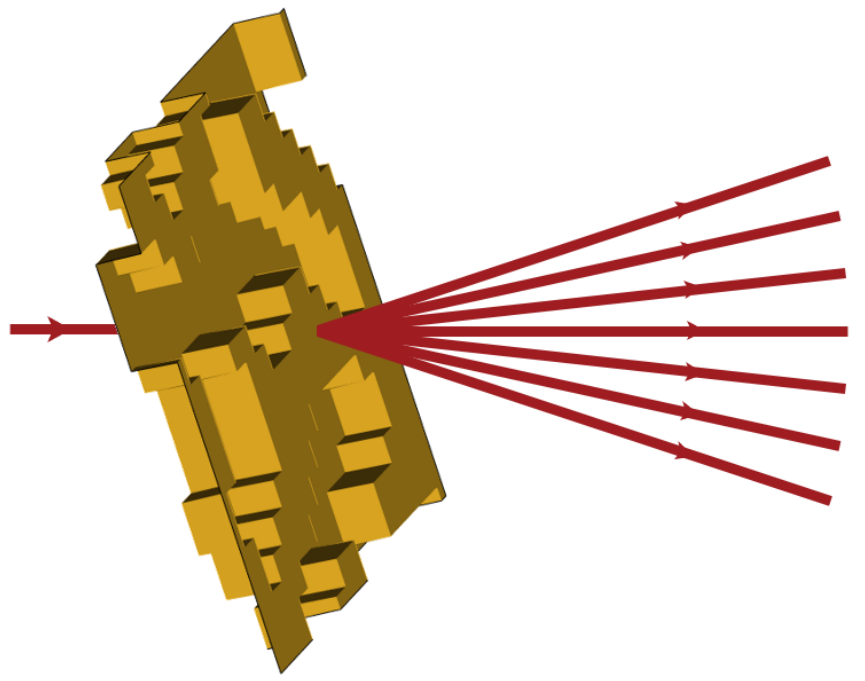
Design Task
• initial design of a diffractive 1:7×7 beam splitter using a paraxial approximation
• performance analysis and further optimization of uniformity and influence of zeroth order by using rigorous analyses
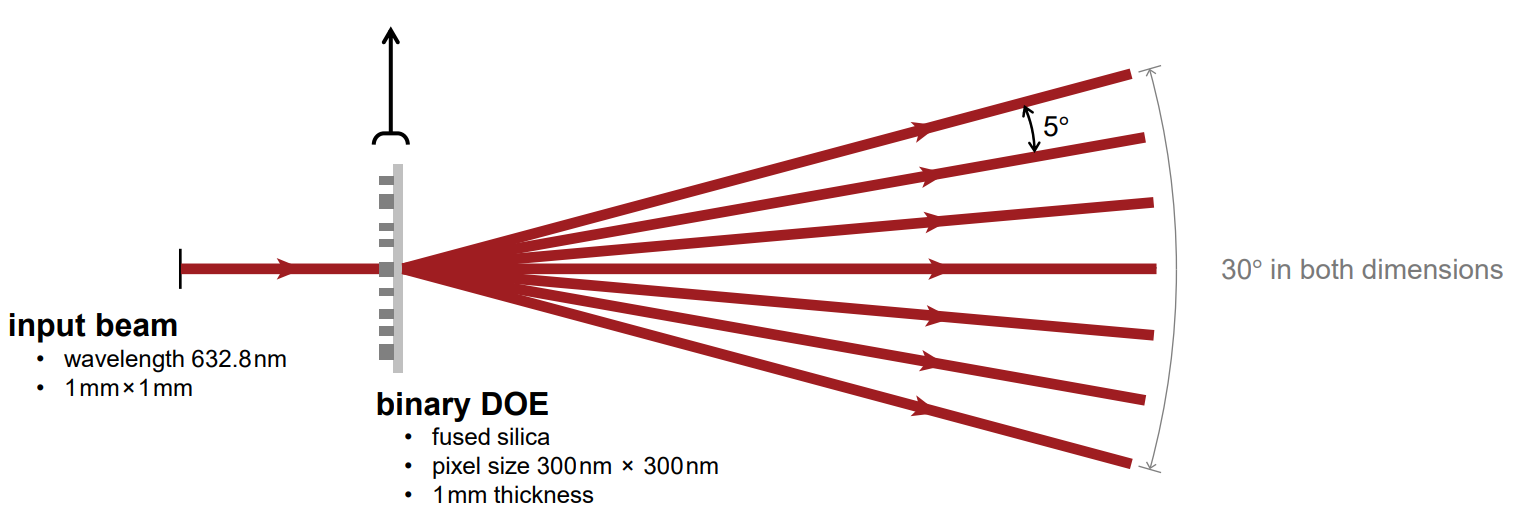
Iterative Fourier Transform Algorithm (IFTA)
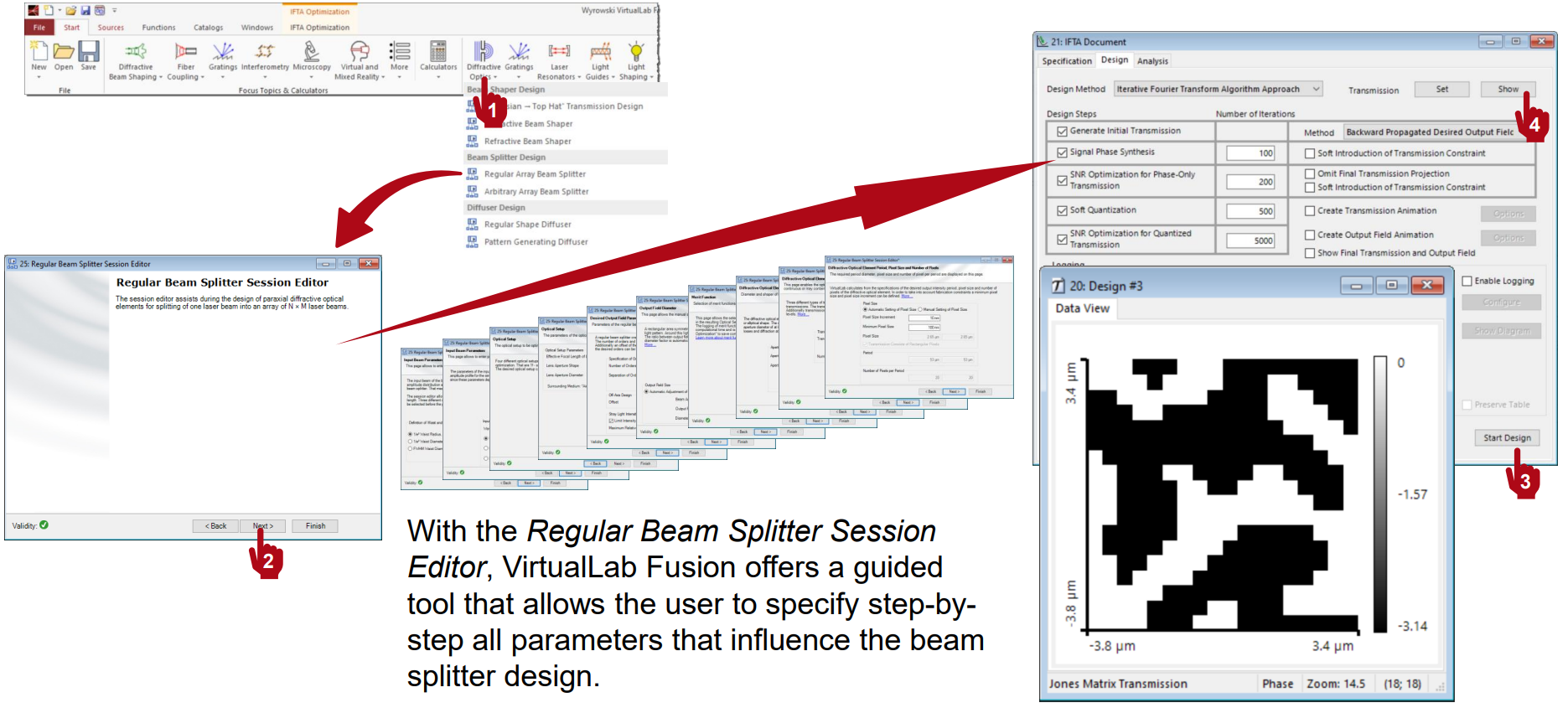
Convert Transmission Function To Structure
• The resulting transmission function can be converted into a structure profile by applying Structure Design from the Design ribbon.
• For this conversion, the Thin Element Approximation (TEA) is used. The resulting structure is hence proportional to the initial phase function.
• VirtualLab Fusion delivers the calculated structure data in the form of already preset elements of an optical setup.
• To use this structure in different simulation scenarios either the actual sampled surface or the specified stack needs to be taken from within the component.
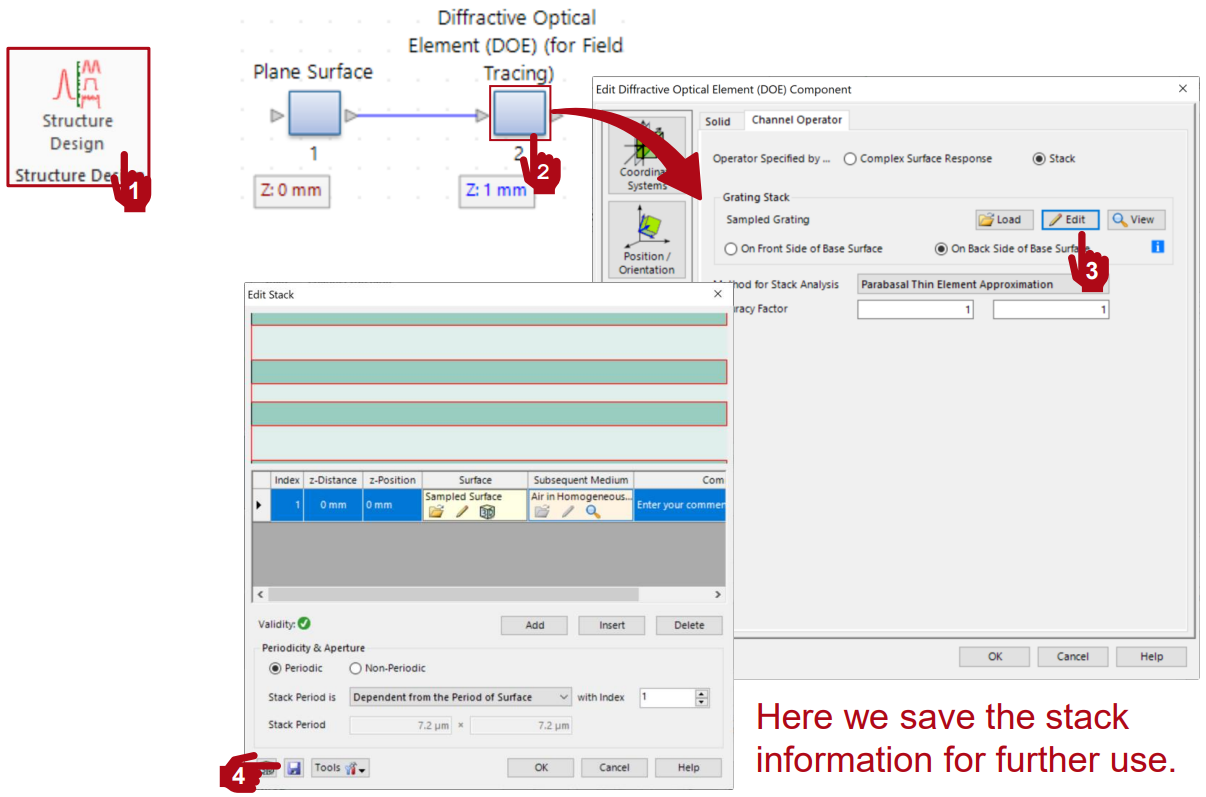
Diffractive Beam Splitter Surface
For further evaluation, a General Grating Optical Setup is used, where load the previously saved stack is loaded. The Grating Optical Setup offers unique tools, components and analyzers to further investigate the characteristics and performance of a given periodic structure.
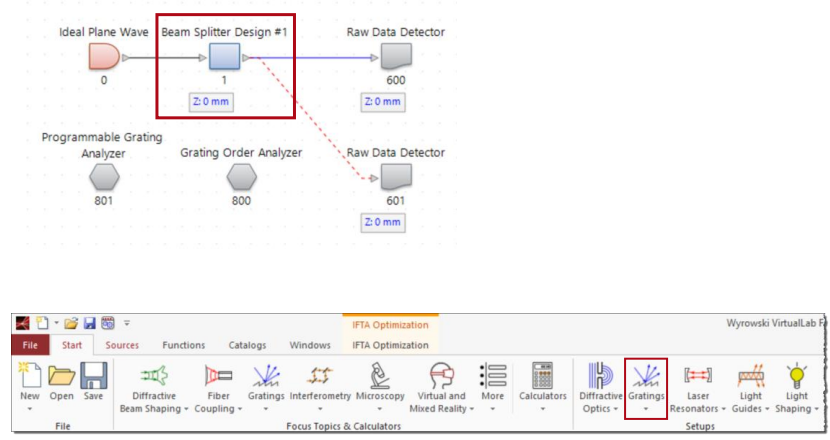
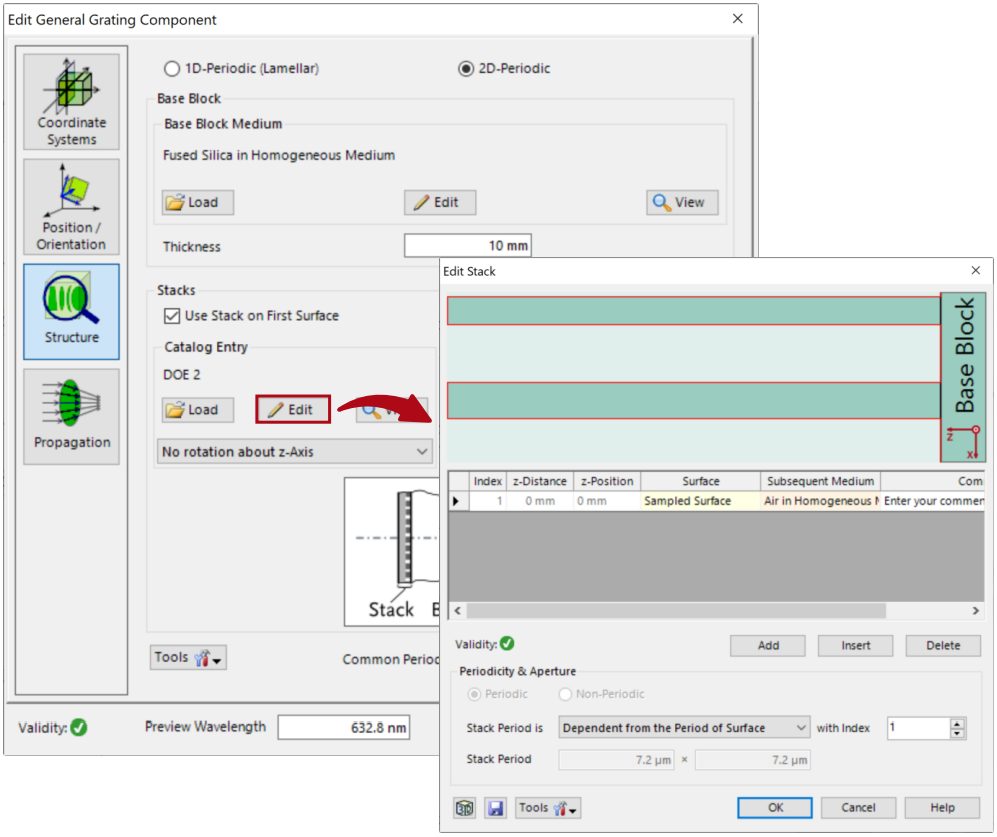
Diffractive Beam Solvers – Thin Element Approximation (TEA)
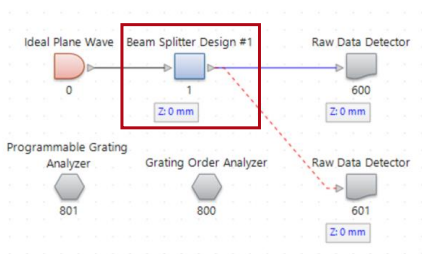
• The General Grating Component offers the Thin Element Approximation (TEA) and the Fourier Modal Method (FMM) as solvers to model the given grating.
• The Thin Element Approximation normally produces results faster but may have accuracy issues, when the structures are smaller than approx. 5 times the wavelength.
• The Fourier Modal Method allows for a rigorous simulation but requires a higher numerical effort.
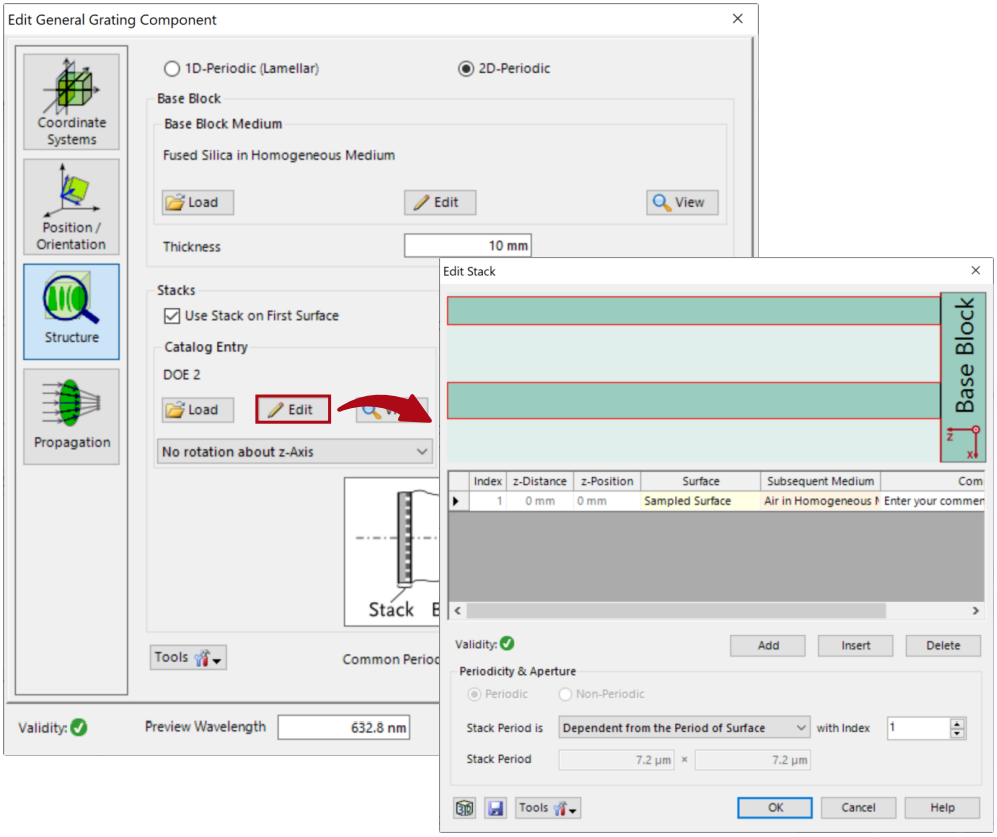
Grating Order & Programmable Grating Analyzer
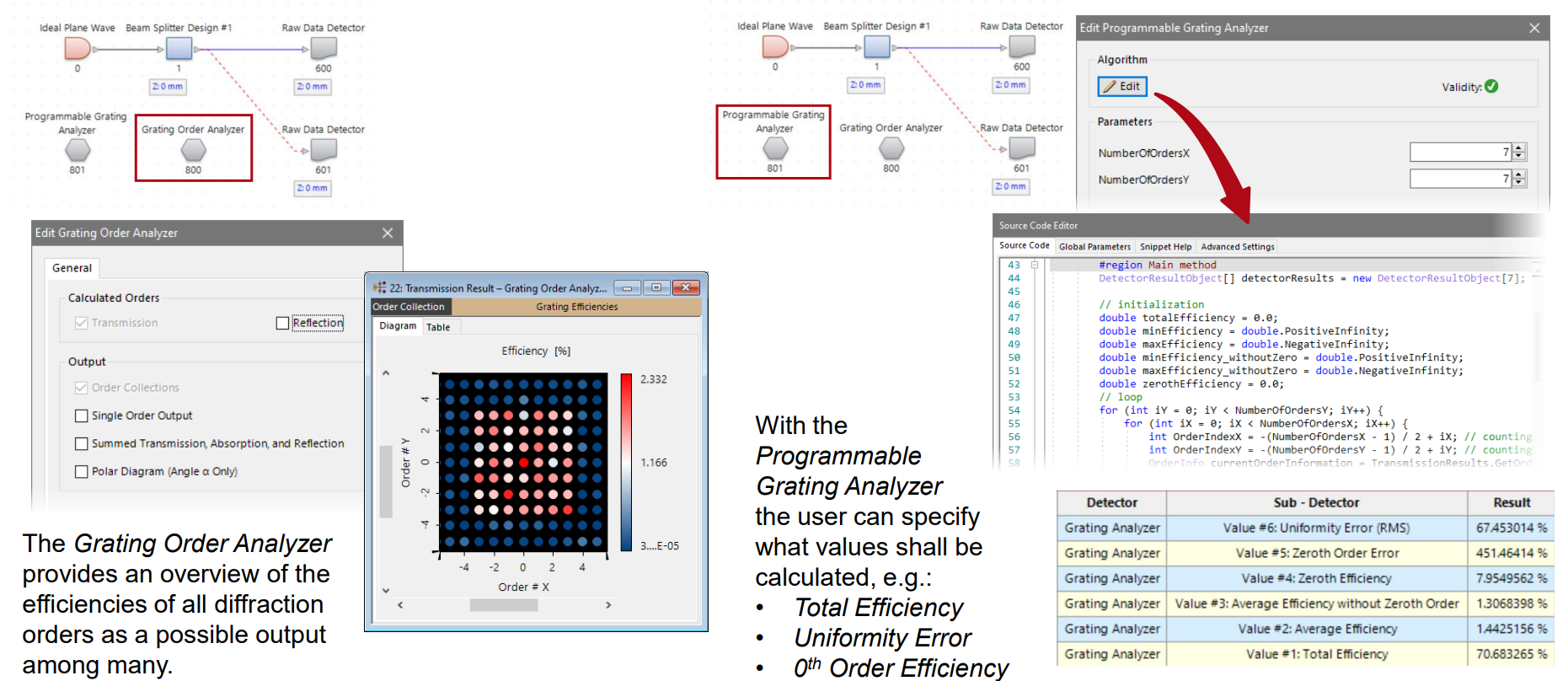
Design & Evaluation Results
• Phase Function Design
• Structure Design
• TEA Evaluation
• FMM Evaluation
• Height Scaling (Tolerancing)
Phase-Only Transmission Design
In this step, the Iterative Fourier Transform Algorithm (IFTA) is applied fot a binary phase-only transmission design
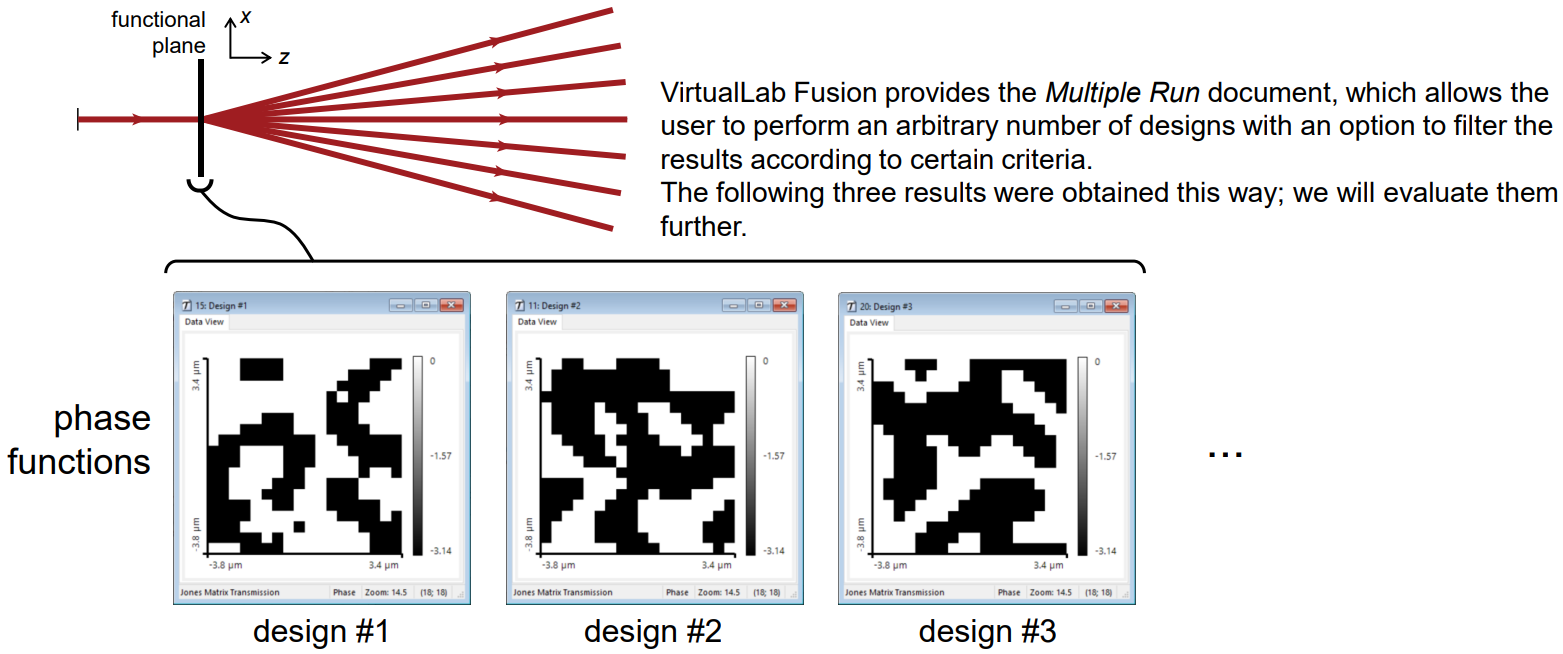
Structure Design
Next, the Thin Element Approximation (TEA) is used for the structure design, means under a paraxial assumption (the phase function and the resulting height profile are therefore proportional)
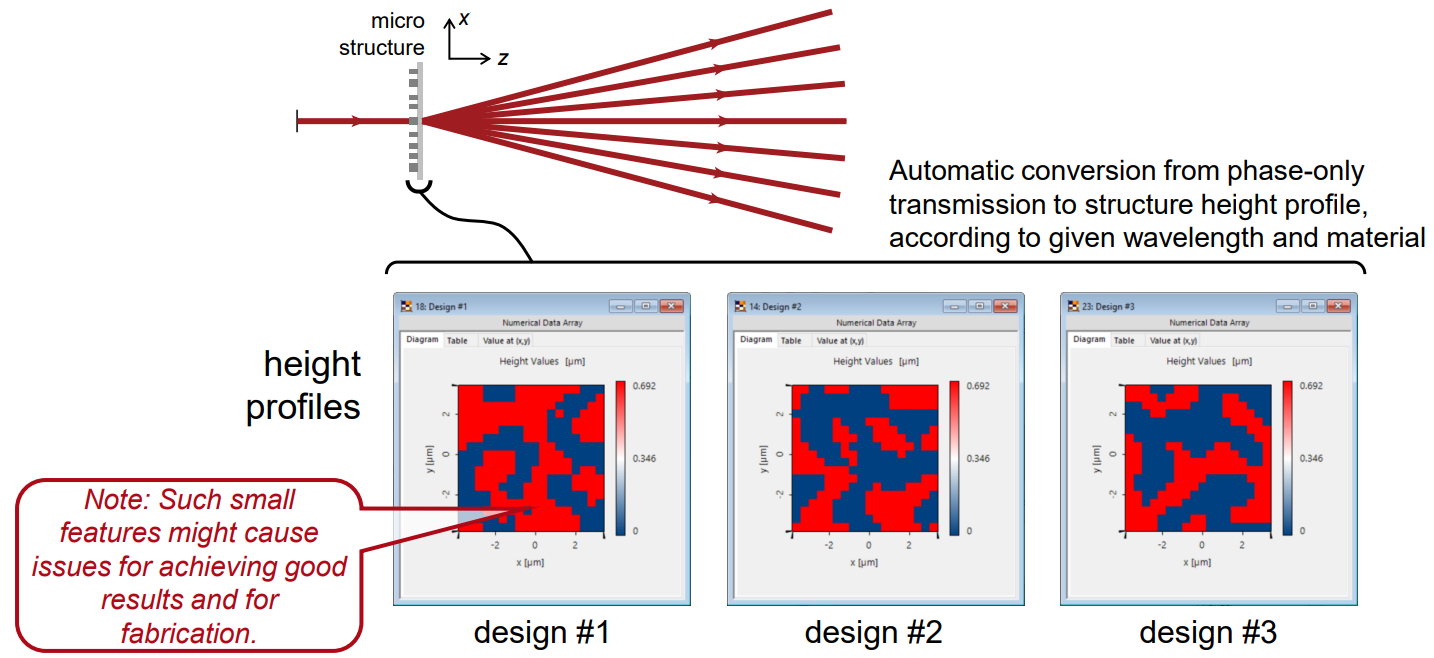
Performance Evaluation with TEA
Now, the obtained microstructure is evaluation with TEA, which was also used for the structure design and which is accurate under paraxial conditions.
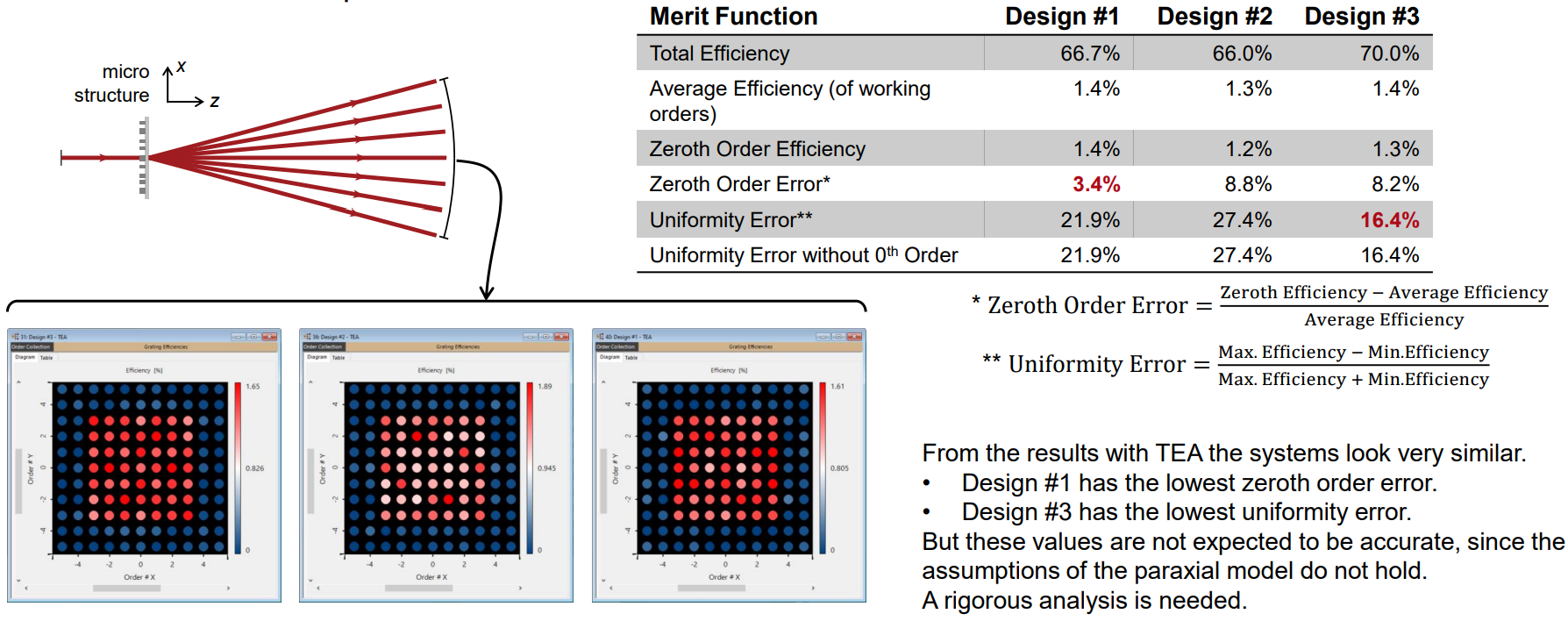
Performance Evaluation with FMM
After the investigation with TEA a rigorous analysis by using FMM is performed.
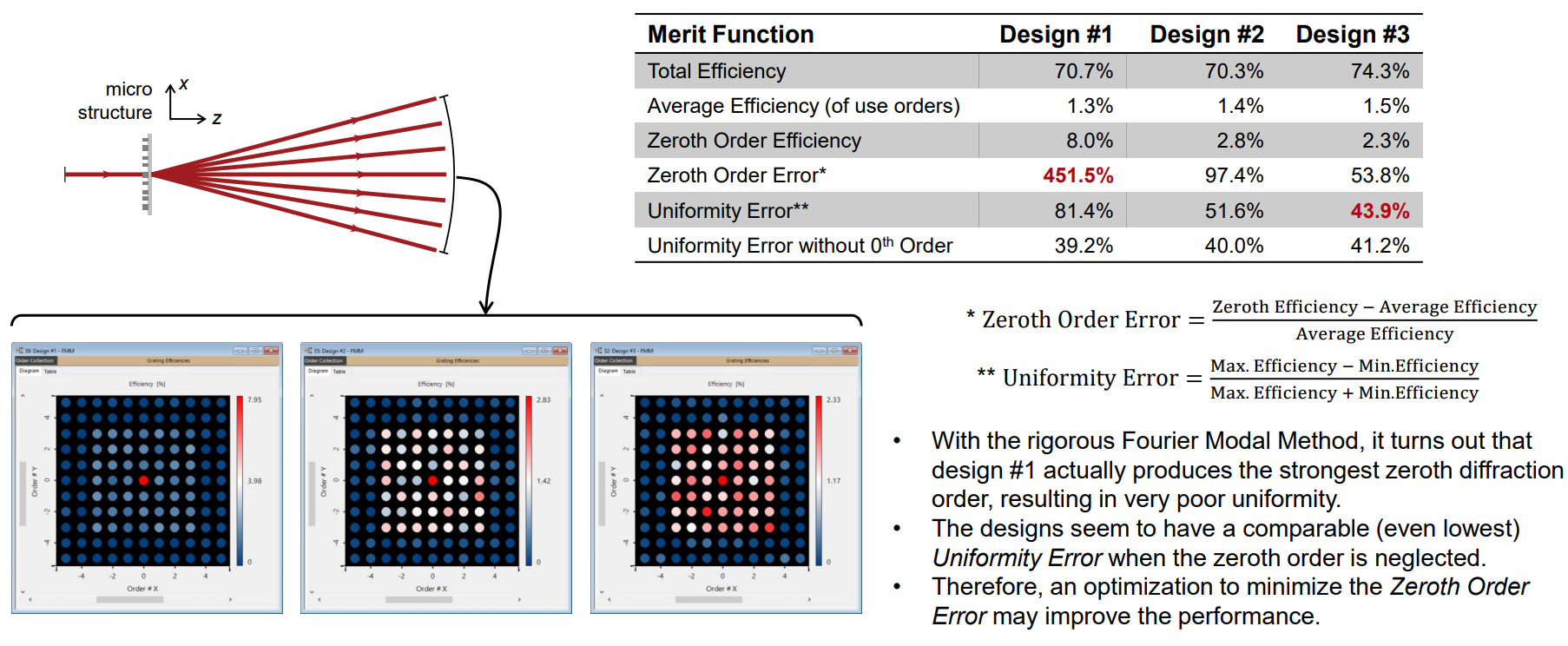
Further Analyses
• A scaling of the height profile has a strong influence on the zero order.
• This can be exploited to correct an undesired efficiency of the zeroth order and thus also to improve the uniformity.
• The Parameter Run is the best suited tool to perform such investigations.
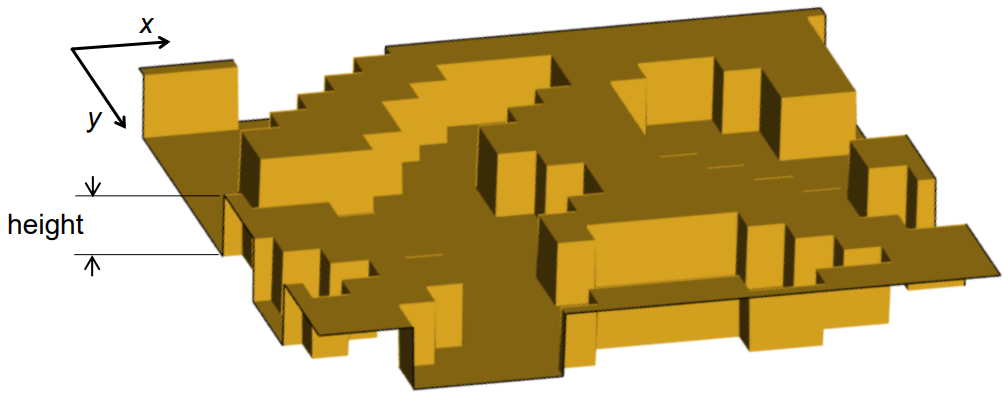
Further Optimization – Zeroth Order Tuning Design #1
• It turns out that a simple height scaling is not sufficient to compensate the quite high value of the Zeroth Order Error of design #1.
• It is worth noting that while the goal of the height scaling is to reduce the zeroth order and thus the Uniformity Error, other merit functions are also affected, but to a lesser degree.
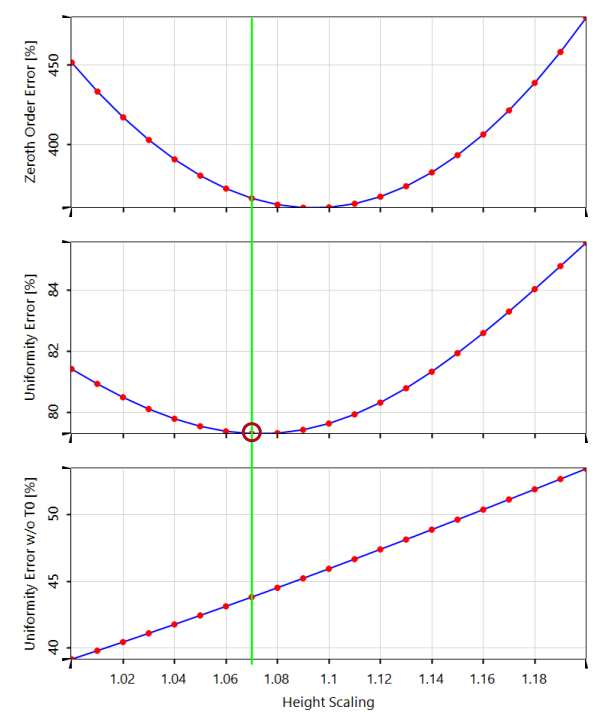

Further Optimization – Zeroth Order Tuning Design #2
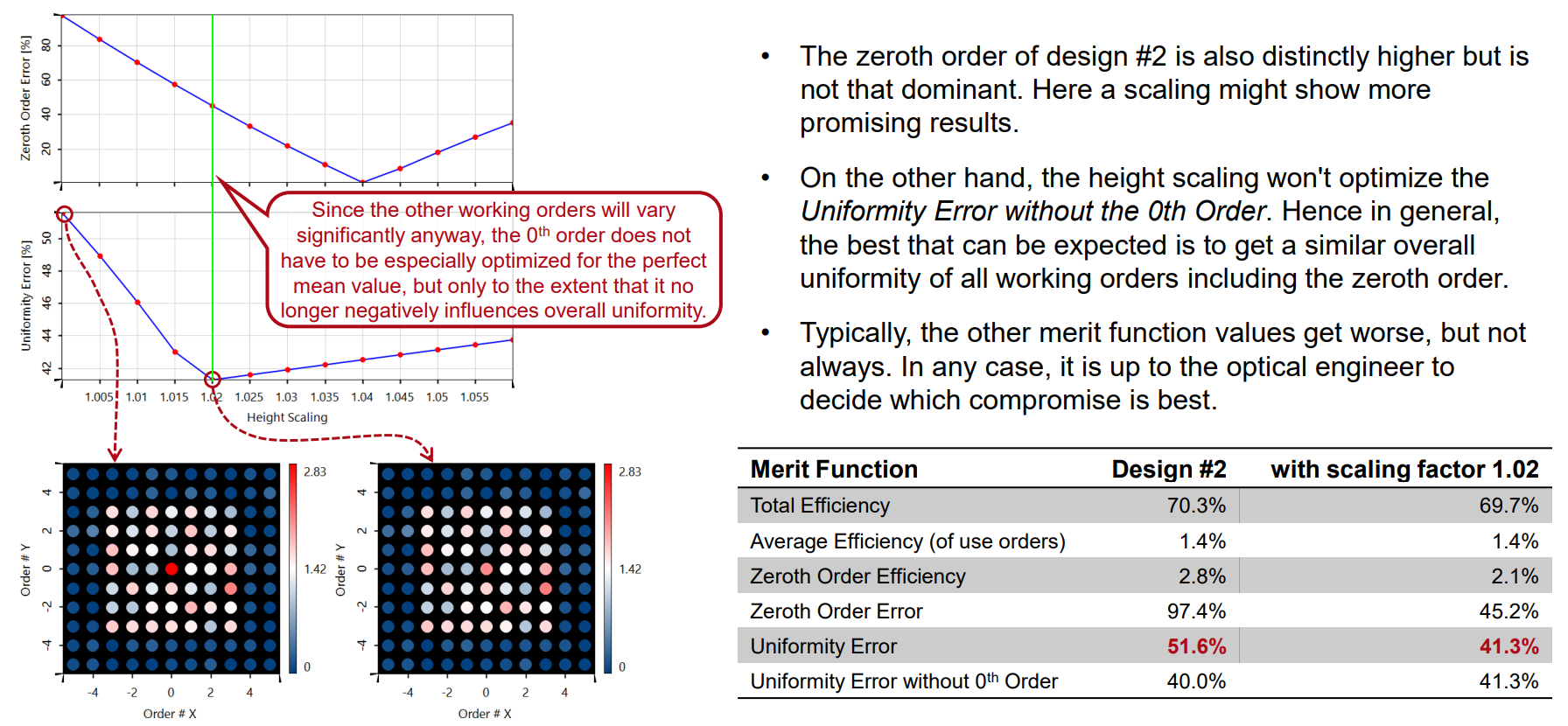
Further Optimization – Zeroth Order Tuning Design #3
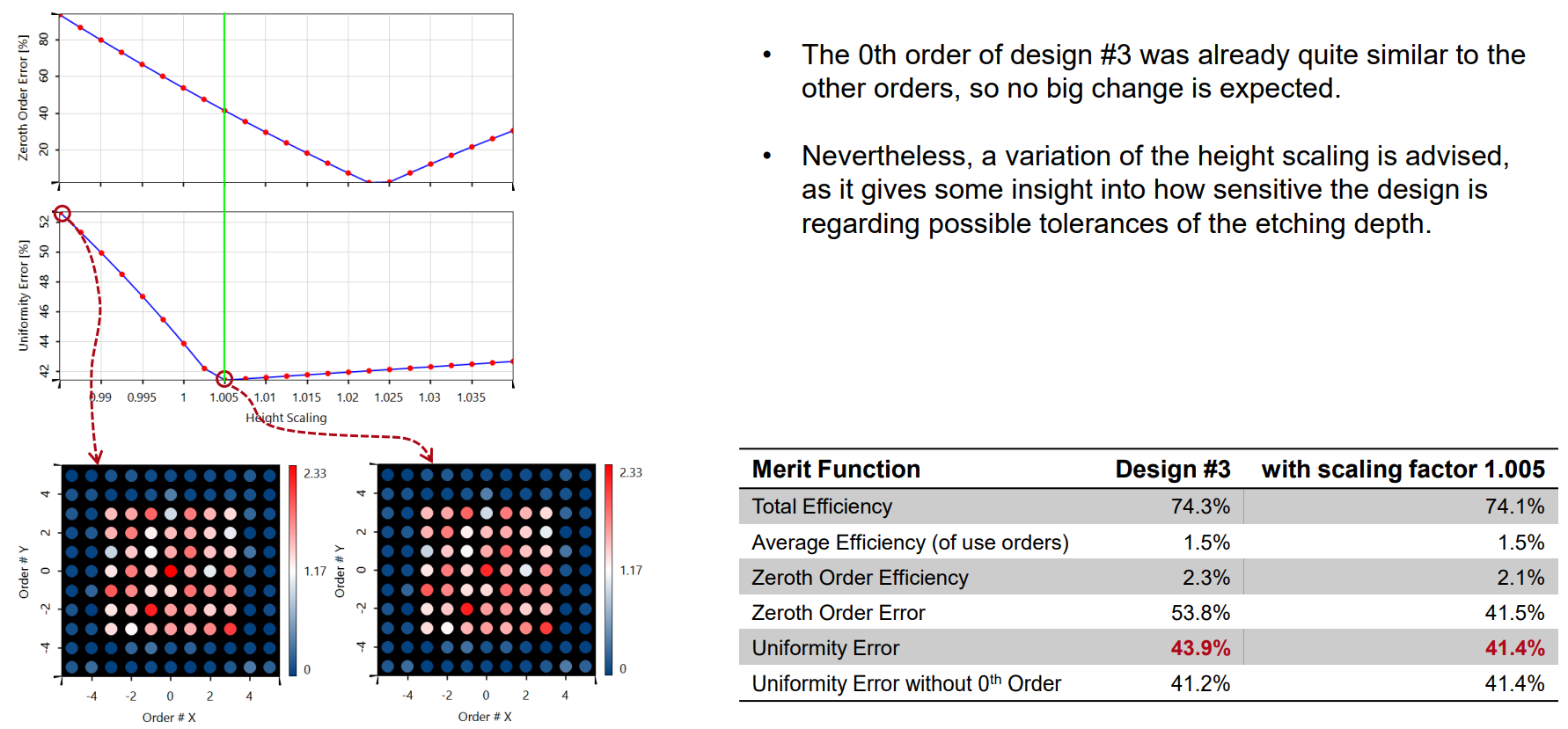
VirtualLab Fusion Technologies
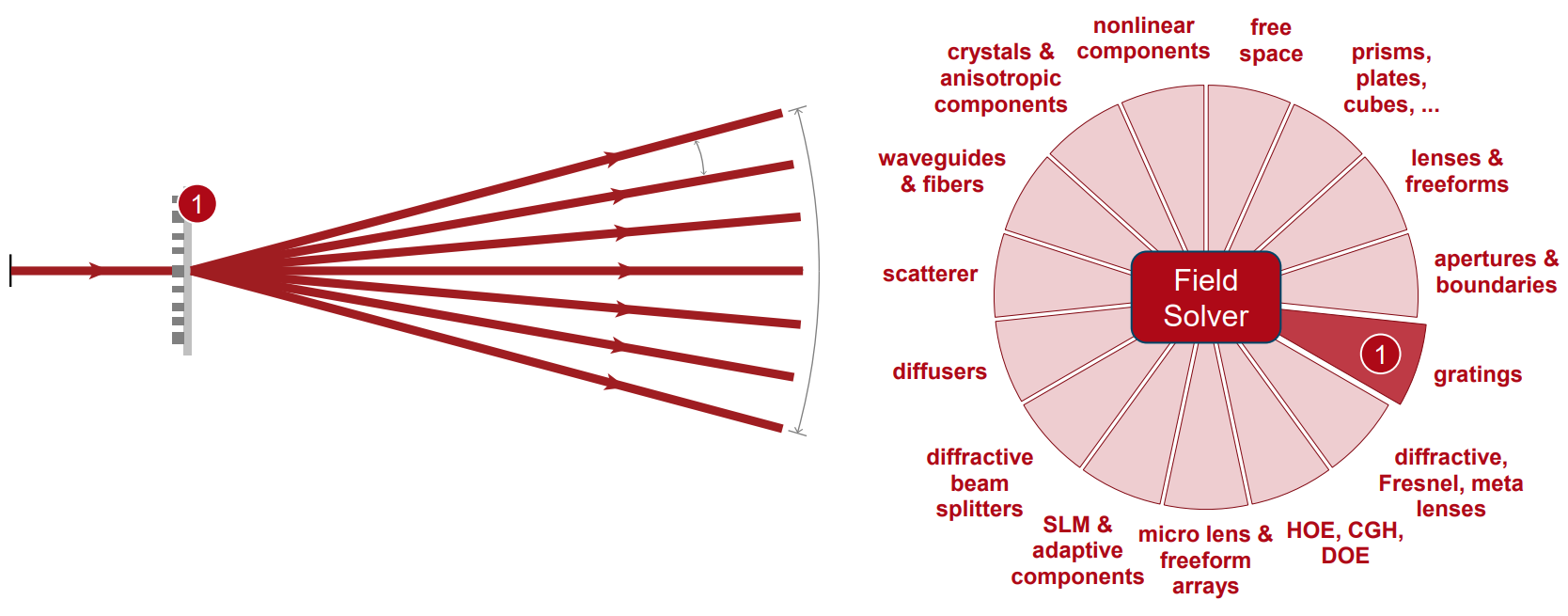
Document Information

further reading
- Grating Order Analyzer
- Configuration of Grating Structures by Using Interfaces
- Design of a High-NA Beam Splitter with 24000 Dots Random Pattern
- Design of Diffractive Beam Splitters for Generating a 2D Light Mark - High NA Splitter Optimization with User-Defined Merit Functions |
|
|
|
|

